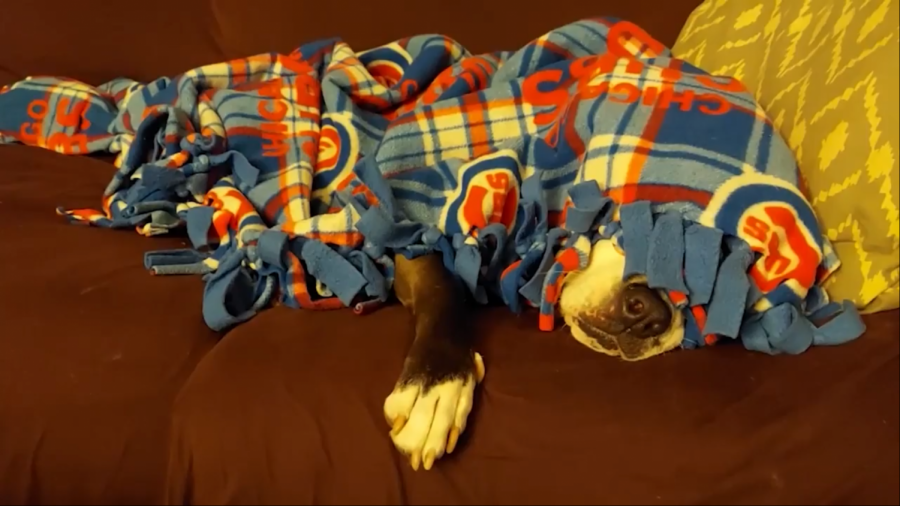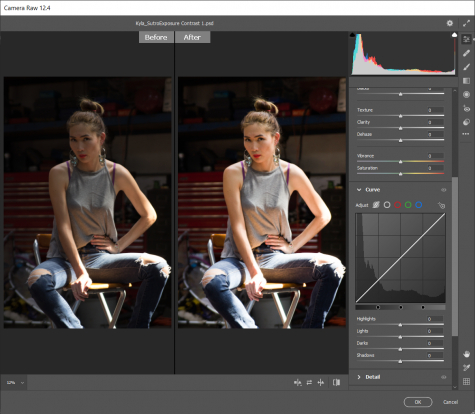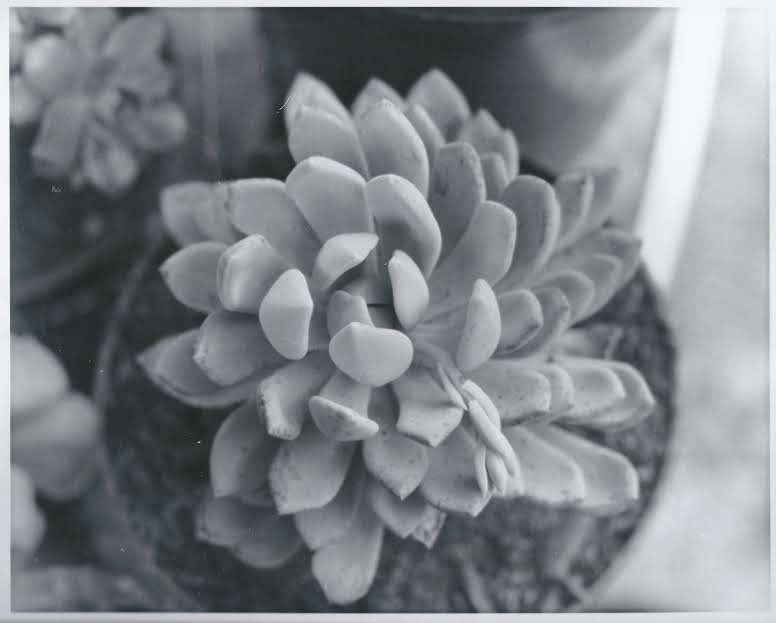For many people, art and design is not merely a pastime or a “creative outlet”. Some people see the discipline as their passion, their bread and butter — the craft they want to continue to explore for the rest of their lives.
This semester, however, some people find themselves struggling. Some of the plights artists have been facing include creative blocks, finding time to do art, finding financial resources sufficient to both cover expenses for their craft and their bills and living expenses, and bearing the stress the COVID-19 pandemic has inflicted over the course of the last 10 months.
Creative arts faculty and students find these setbacks to be both a blessing and a curse. For some people, the global pandemic hindered how well students could learn their coursework in the first place, and their performance academically more broadly, with the transition to remote learning. The predicament has also taken a toll on both students and faculty personally and professionally.
Professor Amir Esfahani taught digital art and web design this semester. He has found classes’ transition to being fully online to be difficult, especially with the amount of time he allotted to providing each course with content and trying to design a seamless learning experience.
“I had a lot of time to prep these courses — Each one took me about one to three years to get into what I would call a very ‘effective’ course and learning environment,” Esfashani said. “It was not easy, and in fact, it takes much longer to prepare an online class than a face-to-face course.”
Like many people in these trying times, Esfahani has also been affected on a personal level.
“I have a baby, and it has been really tough on us, because even as a full-time faculty member, I don’t make enough money to afford childcare, and rent is so expensive,” he said.
Esfahani conducted an anonymous survey among the students in one of his classes, checking up on how they are doing this semester, and how they have coping up with having to subscribe to Adobe Creative Cloud ever since the enterprise ended its free licenses in July.
“So $20 per month adds up to $240 a year,” one of the students answered when asked what they would have otherwise done with the money they used to subscribe with student-discounted Adobe Creative Cloud Subscription. “To some, it may not sound like a lot. I am part of a household of three, relying on the income of one, who is currently on unemployment because of COVID-19. This $20 would actually do a lot more for my family if it weren’t taken from my bank account immediately.”
“I had 2010 (version of) Adobe on my desktop and was hoping to be able to use that, but my Photoshop class required Adobe 2020,” a student commented when asked what software they were using for the class. “Since my source of income got reduced due to COVID-19, my brother was able to help me out and found a way to torrent Adobe 2020. With that said, I’m currently using Adobe Photoshop and Adobe Illustrator. I’m not familiar with Creative Suite.”
“Academically, I was debating whether or not to drop my classes. I was wondering how I would be able to do the work, or if my laptop would be able to handle the work I was doing,” a student commented when asked how Adobe’s resolution to provide free subscription amid virtual learning affected them. “I did experience challenges, but I would switch between my desktop (Adobe 2010) and my laptop (Adobe 2020), which was more frustrating than challenging. I felt like I was limited in what I could do because I was always worried about my laptop crashing or freezing and my work not being saved.”
Esfahani is also spearheading this semester’s art gallery practicum, where students and faculty curate work for exhibits. This semester, however, it was designed to be in a form of blog or gallery, which would be made online next month.
Professor Eileen David had a different set of expectations now that she must teach her watercolor classes online.
“We did a lot of peer critiques and discussions and that was fabulous,” David said, explaining how the transition to online has made students talk more about their artworks. “Actually, that was an aspect of teaching that I hadn’t had in the classroom, not to that level. It was great. In that way, it really built community … I felt like people participated more for that process because they don’t have to deal with being shy about talking in front of a class.”
David also mentioned that the number of students enrolled in her class this semester had almost reached full capacity, and that among those students were ones who live outside San Mateo County, or even outside the Peninsula.
“A lot of people who I don’t think would drive to Skyline took it, like, I had students all the way from West Marin to La Honda,” David said. “So some of those people probably wouldn’t go to Skyline because it was a little out of the way for them.”
Professor Sam Sanchez taught Photoshop and digital filmmaking classes this fall 2020 semester.
“My Photoshop classes are taught from the perspective of a photographer instead of that of an artist or graphic designer,” Sanchez said, explaining what his classes entail. “Both (ART/DMAD 431 and 432, Photoshop and Advanced Photoshop respectively) prepare and train students for a career in image editing and content creation. (DMAD 475, Digital Filmmaking I) is the first of four classes in the Digital Filmmaking Certificate Program. Students start with digital video basics and progress to making cinematics shots and editing short videos.”
Considering the remote learning situation, he had made sure to keep the technical requirements to a minimum.
“A student needed a computer that met the system requirements of Canvas, (the editing app), and an internet connection,” Sanchez said. “All interactions took place through a web browser.”
Sanchez described providing custom “cheat sheets” and videos intended to help students with their assignments.
“The biggest problem for a few students was following written instructions in my cheat sheets and assignments,” he said. “This caused delays in submitting their work for grading. There is technically no final in any of my classes but there is a quiz. It’s open notes/presentations and the students are given several days to complete it. It’s hard to fail, but I always have a few students who do.”
Amanda Snyder Rufino took a digital filmmaking class this semester, for which her husband and their dog Skylar acted as the subjects of the videos it involved her making.
“If I were living alone, I would have had a hard time finding subjects during shelter-in-place,” Rufino said.
Rufino is not seeking a degree, but she enjoys learning about filmmaking.

“With an asynchronous class like this one, I could work more or less at my own pace, which I really like,” she said. “That can be a blessing and curse — especially if you wait until the last minute to complete everything — but I’m comfortable with the at-your-own pace setup, and I know how to avoid the procrastination pitfalls.”
Rufino was looking forward to using the school equipment and learning how to operate professional cameras, which she would have had the opportunity to do if it weren’t for the COVID-19 pandemic. The course, however, is adaptive, especially for those who are having to use their phones to shoot footage.
“Still, (Sam Sanchez), the teacher, went over in detail how to set up our phones for optimal filming, so that helped a lot,” Rufino said.

Kyla Sutro was inspired to learn Adobe Photoshop because of her husband, who is proficient with the software. By taking Professor Sanchez’s Photoshop class, she wanted to learn to use the program for herself. However, she very much would have preferred to have taken the class in a face-to-face setting rather than an online one.
“Easily, the distractions in my home and in my head are the most difficult part of learning remotely,” Sutro said. “(A) self-guided (class) is exactly that, but under duress and distractions, it’s so brutal. … I’m a kinetic learner and I do prefer in-person instruction, but this is a great class for a pandemic. This class was a smooth way to transition into this scary new screen life.”
Professor Dianne Jones taught photography and art history this semester. Like most people, Jones has also been affected by the tragedy after tragedy that has erupted inside and outside the country: the pandemic, the forest fires, the situations in politics, etc. Nonetheless, she is glad that she was able to help her students with their educational goals by teaching online classes this semester.
“I guess one impact (transitioning to remote learning has had on me) is I have taken on larger class size to help students get closer to their own personal educational goals,” she said. “I feel like I’m working more now than before the pandemic. I love teaching online — I’m enjoying this opportunity to expand my skills and methodologies for the course materials I share with my students online.”
Jones was especially proud of the students she has had during this year’s spring, summer, and fall semesters, largely because of how committed they were when it came to completing the coursework.
“My students did a really good job, turning in projects, creating interesting discussions for the weekly assignments,” she said. “Of course, we all had weeks or days that made being at our best difficult, and I’m very understanding when the stress level is so high.”
Lisa Niehuser has been interested in photography ever since she was a child. She has taken some of Jones’ photography classes previously. Although she did not enroll in any photography classes this semester, she took Jones’ art history class.
“It was a fun class to learn virtually,” Niehuser said. “I learned a lot this semester, this class was structured to be online, and it worked out smoothly for me which I’m very grateful for.”
She is looking forward to taking Jones’ color photography class in the spring.
The situations the pandemic has caused may not be aesthetically pleasing, but for some people, a little perspective in life can make a huge difference.
With the advent of COVID-19 vaccines, which are already beginning to be implemented and distributed, the hope is that as a “new normal” is brought about, grace and prosperity will be brought to artists, and may permit for new masterpieces to be born during this dark stretch of the present era.
This story was originally published on The Skyline View on December 23, 2020.



























![IN THE SPOTLIGHT: Junior Zalie Mann performs “I Love to Cry at Weddings,” an ensemble piece from the fall musical Sweet Charity, to prospective students during the Fine Arts Showcase on Wednesday, Nov. 8. The showcase is a compilation of performances and demonstrations from each fine arts strand offered at McCallum. This show is put on so that prospective students can see if they are interested in joining an academy or major.
Sweet Charity originally ran the weekends of Sept. 28 and Oct. 8, but made a comeback for the Fine Arts Showcase.
“[Being at the front in the spotlight] is my favorite part of the whole dance, so I was super happy to be on stage performing and smiling at the audience,” Mann said.
Mann performed in both the musical theatre performance and dance excerpt “Ethereal,” a contemporary piece choreographed by the new dance director Terrance Carson, in the showcase. With also being a dance ambassador, Mann got to talk about what MAC dance is, her experience and answer any questions the aspiring arts majors and their parents may have.
Caption by Maya Tackett.](https://bestofsno.com/wp-content/uploads/2024/02/53321803427_47cd17fe70_o-1-1200x800.jpg)
![SPREADING THE JOY: Sophomore Chim Becker poses with sophomores Cozbi Sims and Lou Davidson while manning a table at the Hispanic Heritage treat day during lunch of Sept 28. Becker is a part of the students of color alliance, who put together the activity to raise money for their club.
“It [the stand] was really fun because McCallum has a lot of latino kids,” Becker said. “And I think it was nice that I could share the stuff that I usually just have at home with people who have never tried it before.”
Becker recognizes the importance of celebrating Hispanic heritage at Mac.
“I think its important to celebrate,” Becker said. “Because our culture is awesome and super cool, and everybody should be able to learn about other cultures of the world.”
Caption by JoJo Barnard.](https://bestofsno.com/wp-content/uploads/2024/01/53221601352_4127a81c41_o-1200x675.jpg)






